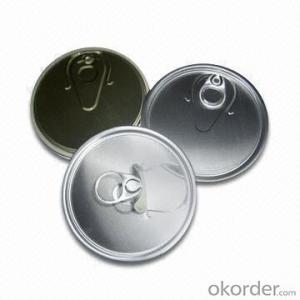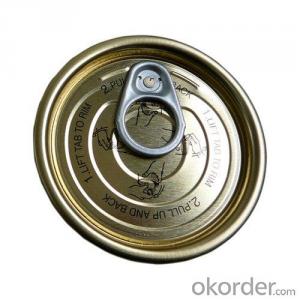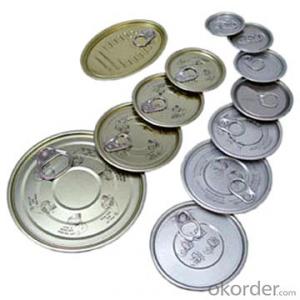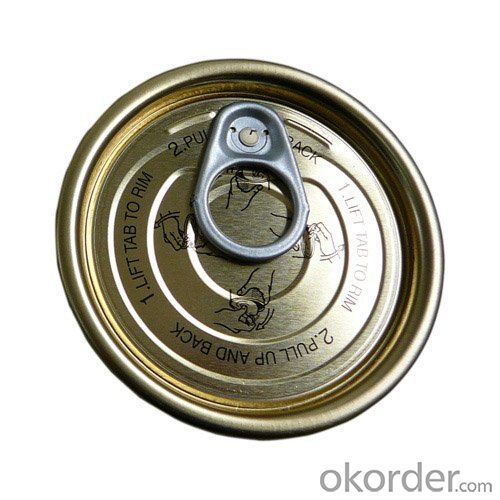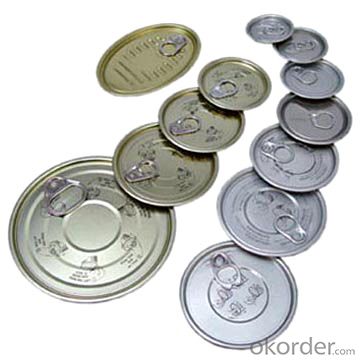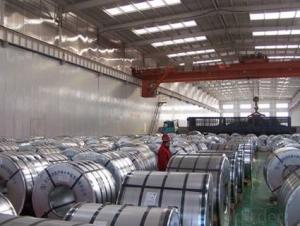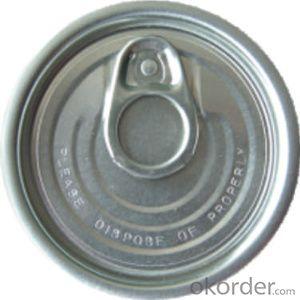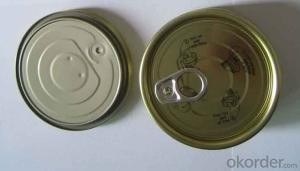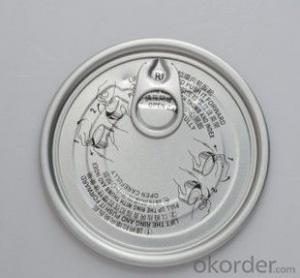Aluminum Material EOE, Model 300# Made in China
- Loading Port:
- China main port
- Payment Terms:
- TT OR LC
- Min Order Qty:
- 100000 pc
- Supply Capability:
- 10000000 pc/month
OKorder Service Pledge
OKorder Financial Service
You Might Also Like
Specification
Specifications
aluminum tennis eoe
2.item num:300#
3.have saferim
4.size:72.9mm
5.type:full open
Name | aluminium tennis eoe |
Item No. | 300 # |
Shape/type | Round |
Size(mm) | Dia 72.9 |
Coating | Clear inside & outside |
Material | Aluminum |
Pcs/Carton | 3,000 Customize packing: as clients’ requests. |
Features | 1.Have saferim. 2.For tennis storage. 3.Coating can be according to customer required. |
We could offer package as customers require, by carton or by wooden pallet.
Our packing
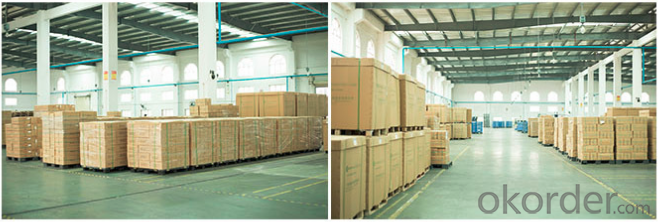
Our Workshop
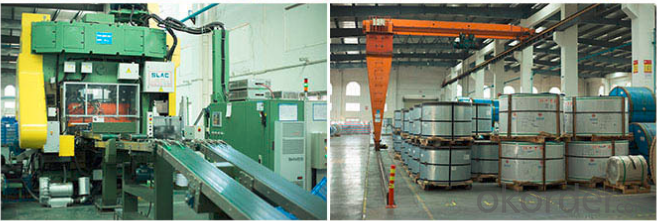
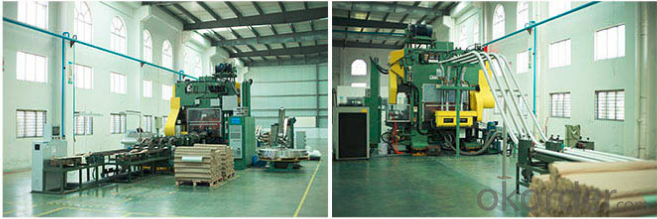
FAQ
1.Q: What is the material ?
Both tinplate and aluminum material, our raw material is purchase from large steel company.
2. Q: What is monthly output?
about 10000,000 per month
3.Q:Could you offer samples for our testing?
YES, of course.
4. Q:Can you make new mold with customized size?
YES, we can, but the quantity should meet our requirement.
5. Q: Payment term you accept:
TT, LC, DP, etc., this could be negotiable.
- Q: Can tinplate be used for luxury packaging?
- Yes, tinplate can be used for luxury packaging. Tinplate is a versatile material that offers a high level of durability, strength, and visual appeal. It can be molded into various shapes and sizes, making it suitable for creating luxurious and exquisite packaging designs. Additionally, tinplate has a premium appearance and can be decorated with intricate designs or embossing, enhancing the overall aesthetic of luxury packaging.
- Q: What are the main challenges in tinplate transportation?
- The main challenges in tinplate transportation include ensuring proper packaging and securing of the tinplates to prevent damage during transit, managing the weight and volume limitations imposed by transportation regulations, coordinating logistics and transportation routes to minimize delivery times and costs, and addressing potential issues related to customs and import/export regulations for international shipments. Additionally, maintaining product quality and preventing contamination or corrosion during transportation are also important challenges to overcome.
- Q: Can tinplate packaging be used for industrial products?
- Yes, tinplate packaging can be used for industrial products. Tinplate is a durable and versatile material that provides excellent protection and preservation for various industrial goods. It is commonly used for packaging chemicals, paints, lubricants, and other industrial products due to its resistance to corrosion, moisture, and impact. Additionally, tinplate packaging can be easily customized to meet specific industrial requirements, making it a suitable choice for such applications.
- Q: How can tinplate be rustproof? Products must not be oil
- RP014C-23A thin layer quick drying antirust oil is made up of film forming agent, oil soluble corrosion inhibitor and refined petroleum solvent. It is a kind of volatile long-term antirust oil.
- Q: How is tinplate different from other types of steel?
- Tinplate is different from other types of steel due to its unique coating of tin on both sides, which provides corrosion resistance, enhances the material's appearance, and makes it suitable for packaging applications.
- Q: What are the different ways to seal tinplate cans?
- There are several different ways to seal tinplate cans. Some common methods include double seam sealing, soldering, welding, and adhesive bonding. Each method has its own advantages and suitability based on factors like the type of product being stored, the desired level of sealing integrity, and the production process.
- Q: How is tinplate used in the packaging industry?
- Tinplate is commonly used in the packaging industry due to its excellent properties such as corrosion resistance, durability, and formability. It is often used in the production of metal cans and containers for food and beverages, cosmetics, and other consumer goods. The tin coating on the steel substrate provides a protective barrier against moisture, light, and oxygen, ensuring the preservation and prolonging the shelf life of the packaged products. Tinplate is also used for decorative purposes, as it can be easily printed on, making it an ideal choice for branding and marketing.
- Q: How does the coating affect the properties of tinplate?
- The coating on tinplate significantly affects its properties. The coating provides a protective barrier against corrosion, enhancing the tinplate's durability and extending its shelf life. Additionally, the coating can improve the tinplate's resistance to chemical reactions and make it more suitable for food packaging applications. The coating also influences the tinplate's appearance, allowing for various decorative finishes. Overall, the coating plays a crucial role in enhancing the properties and performance of tinplate.
- Q: Can tinplate be used for pharmaceutical packaging?
- Yes, tinplate can be used for pharmaceutical packaging. Tinplate is a type of steel coated with a thin layer of tin, which provides excellent protection against corrosion and ensures the integrity and safety of pharmaceutical products. It is commonly used for the production of cans, containers, and closures, making it a suitable choice for pharmaceutical packaging due to its durability, resistance to light and moisture, and ability to maintain product quality and safety.
- Q: Can tinplate packaging be used for gift items?
- Yes, tinplate packaging can be used for gift items. Tinplate is a durable and versatile material that can be shaped into various sizes and designs, making it suitable for packaging different types of gifts. Additionally, tinplate packaging offers a unique and attractive appearance, enhancing the overall presentation of the gift.
Send your message to us
Aluminum Material EOE, Model 300# Made in China
- Loading Port:
- China main port
- Payment Terms:
- TT OR LC
- Min Order Qty:
- 100000 pc
- Supply Capability:
- 10000000 pc/month
OKorder Service Pledge
OKorder Financial Service
Similar products
Hot products
Hot Searches
Related keywords
